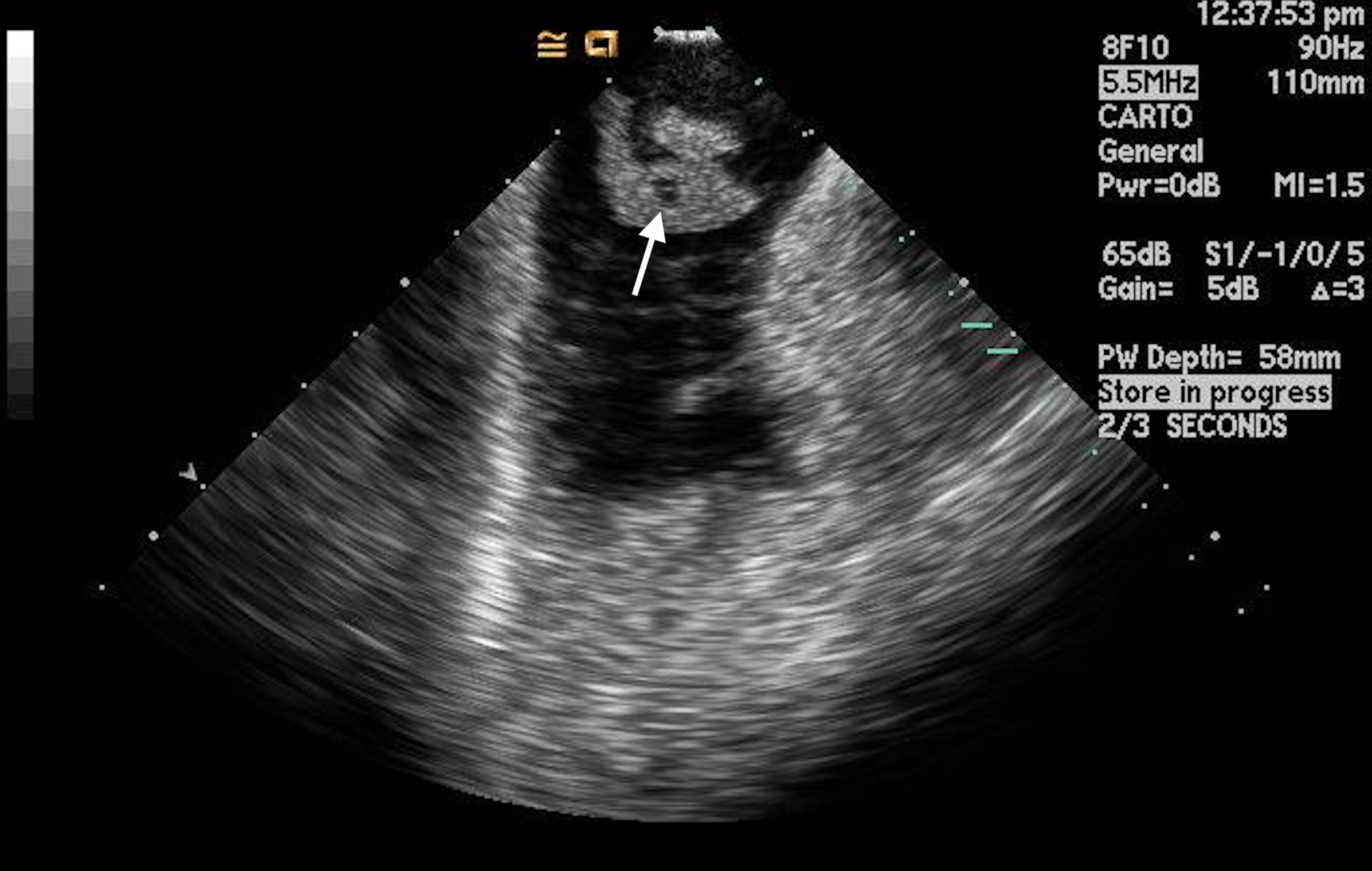A New Technique to Debulk Large Vegetations Before Lead Extraction
Newer implements designed to extract transvenous pacemaker and defibrillator leads have resulted in increased success and safety. Before the mid 1990s when laser lead extraction sheaths were introduced, lead extractions were performed using simple traction and primitive tools that included steel and Teflon mechanical sheaths. Many more contraptions are now available to remove leads, such as mechanical rotational sheaths, and more devices are available to manage potential complications related to lead extraction, including the intravenous occlusion balloon designed to stabilize the patient in the event of a superior vena cava tear.
A lingering management problem in the field of lead extraction is how to treat patients who have a large infectious vegetation attached to a transvenous lead. When a vegetation exceeds 2.5 cm, there is concern that extraction of the lead could result in embolization of the vegetation, causing a large pulmonary embolism or obstruction of the pulmonic valve. Although open surgery can be performed to remove leads with large vegetations, surgery has significant morbidity in these patients. There is also evidence that these leads can be safely removed percutaneously.1 One of the reasons it may be safer to remove a lead attached to a large vegetation is that the mass breaks up into smaller parts when the lead is removed, or that it remains stationary and does not embolize because it is attached to the tricuspid valve or endocardium. The figure and accompanying video show an intracardiac echocardiography (ICE) image of a large infected vegetation that remained attached to the heart after a transvenous pacing lead was extracted.
There is increasing experience with debulking large vegetations just prior to extracting infected leads using a transvenous suction device. Most of these reports have described the use of the AngioVac System (AngioDynamics). However, a group from Vanderbilt Health recently described their experience with reducing infected vegetations using a different suction apparatus (Penumbra Aspiration system, Penumbra Inc.).2 They used the Penumbra system suction device to pare down highly mobile vegetations with a median size of 2.0 cm in eight patients just before, or in one case, after lead extraction. The maximum dimension of the vegetation was at least 3 cm in four patients. The CAT8 aspiration catheter of the system was placed through an 8.5 French steerable sheath, and advanced through a 16 Fr long introducer sheath placed in the femoral vein to allow deflection of the system in the heart and to allow for removal of large pieces of the vegetation. The vegetations were reduced to less than 1.0 cm in all cases by repeatedly advancing the end of the device firmly against the vegetation as guided by intracardiac echocardiography, applying suction at 15-60 psi until adherence was detected, and pulling out any vegetation fragments attached to the device. Because the suction system does not filter and return the blood using a bypass circuit, suction can only be activated when the end of the suction catheter is firmly against the vegetation. The median time of the aspiration portion of the procedure was 14 minutes. There were no acute complications related to the suction catheter, although three patients required blood transfusions and three patients had small pulmonary emboli after the extraction.
It is still not clear how to manage patients with a large intracardiac vegetation attached to an infected transvenous lead. However, this new information from Vanderbilt’s EP group shows that the Penumbra suction device can be used in select patients to effectively debulk large mobile vegetations before the lead is removed.
Disclosure: Dr. Knight reports that he is a consultant, speaker, investigator, and offers fellowship support for Abbott, Baylis Medical, Biosense Webster, Inc., BIOTRONIK, Boston Scientific, Medtronic, and SentreHEART.
- Meier-Ewert HK, Gray ME, John RM. Endocardial pacemaker or defibrillator leads with infected vegetations: a single-center experience and consequences of transvenous extraction. Am Heart J. 2003;146(2):339-344. doi:10.1016/S0002-8703(03)00188-1.
- Richardson TD, Lugo RM, Crossley GH, Ellis CR. Use of a Clot Aspiration System During Transvenous Lead Extraction. J Cardiovasc Electrophys. 2020. In press.












